20
01
2009
After reporting the first year of the project’s work in Edinburgh at the 2008 e-Science All Hands Meeting, we’ve updated this in a new article:
Bailey, H., Bachler, M., Buckingham Shum, S., Le Blanc, A., Popat, S., Rowley, A. and Turner, M. (2009). Dancing on the Grid: Using e-Science Tools to Extend Choreographic Research. Philosophical Transactions of the Royal Society A, 13 July 2009, Vol. 367, No. 1898, pp. 2793-2806. [PDF]
This paper considers the role and impact of new and emerging e-Science tools on practice-led research in dance. Specifically it draws on findings from the e-Dance project. This two-year project brings together an interdisciplinary team combining research aspects of choreography, next generation of video conferencing, and Human-Computer Interaction analysis incorporating hypermedia and non-linear annotations for recording and documentation.
Keywords: Access Grid, Choreography, Dance, e-Science, Hypertext, Knowledge Cartography, Networked Performance
Comments : No Comments »
Categories : Dissemination, Publication
7
11
2008
Last week I (Sita) was in Dresden, Germany, as a guest presenter at the Post Me_New ID Forum (31st October-2nd November 2008). The Forum web site describes this international gathering of academics and professional artists as “a platform for reflection on how we are creatively and socially engaged in digital networks, how we perform our online and offline identities, how we have become plural and variable post human bodies.â€Â The site includes a full record of the event, and an active blog.
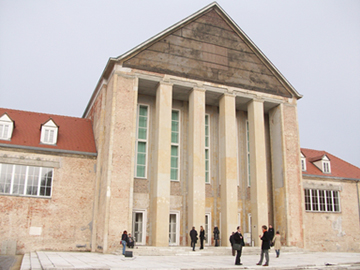
The event was held at Hellerau (above), once the workspace of such performance visionaries as Mary Wigman (dance) and Adolphe Appia (scenography). Â
The first day of the Forum was devoted to discussions around the topic of “Networked Creationsâ€. Yacov Sharir gave a keynote presentation, following which I conducted a public ‘conversation’ with the Australian choreographer Hellen Sky. We discussed the fluid and expanding body in digital performance, and we explored how networked creative processes and identities are characterised by fragmentation, partial attention, and notions of ‘becoming’. It was very interesting to hear Hellen Sky referencing her extensive background in telematic performance with her group Company in Space.
The following day explored “Multi-identities”, and Steve Dixon gave an excellent keynote on the ‘digital double’ in performance. He proposed four categories:
- Mirror double – the emergence of the self-reflexive technological self
- Alter-ego – the dark doppleganger, the schizophrenic self
- Spiritualised emanation – the transcendent, mystical conception of the virtual body
- Manipulable mannequin – the replacement body; body of a synthetic being
These might be useful terms for e-Dance to consider in relation to the way in which we experience our ‘selves’ through Access Grid technologies.
Comments : 1 Comment »
Categories : Dissemination
6
10
2008
JISC are having a roadshow at Manchester – Advanced tools and technologies for collaborative research:Â Thu 6 Nov 2008.
http://www.jisc.ac.uk/manchesterroadshow
Included is a section on e-Dance within the “Specialist Access Grid Projects” discussion, and an image from one of the previous intensives is on the main flyer.

Then at Roadshow no.2
e-Dance and other AG (VRE projects) were presented as part of the JISC second Roadshow in London. Workshop title From motion capture to ancient manuscripts: using complex digital resources across disciplines, Given within the talk “Reasons and Experience for Needing Visualizations of Complex Remote Data Sourcesâ€, Martin Turner, University of Manchester Friday 30th January 2009. This involved also a series of visualization steering methods and example case studies from experiences at the University of Manchester and the vizNET (JISC) initiative.
Comments : No Comments »
Categories : Dissemination, Event
1
10
2008
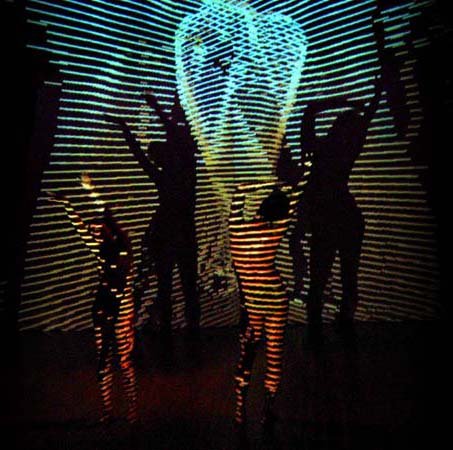 Â
Â
I have been selected as one of the ten artists to take part in the MIMA (Moving Image Media Artists) workshop with Troika Ranch in http://www.troikaranch.org/ New York at the end of October. This week-long workshop will give me the opportunity to work directly with Mark Coniglio, the Co-director of Troika Ranch and developer of Isadora. It should provide a useful context for discusson about the e-Dance software development and give me a much greater insight into the capabilities that Isadora offers.
Comments : No Comments »
Categories : Media, Theory
18
09
2008
      
We all managed to get together for one day during DRHA 2008, University of Cambridge, UK, 14-17 September http://www.rsd.cam.ac.uk/drha08/ . It was great to have the chance to catch up after a summer of really interesting activity on the project. Sita, Martin, Simon and myself (together with Scott Palmer from University of Leeds) were all participating in a panel that we had proposed for the conference. We presented three projects Stereobodies/Choreographic Morphologies (Martin and I) http://kato.mvc.mcc.ac.uk/rss-wiki/SAGE/StereoBodies , Projecting Performance (Sita and Scott) http://www.leeds.ac.uk/paci/projectingperformance/home.html and e-Dance (Simon and I). The focus of the panel that brought the three projects together, was concerned with the role/function/construction of ‘interfaces’ in dance.  The panel abstract summarised the dicussion as follows;Â
“This panel will discuss visual communication interfaces in dance performance environments through the frames of three current/recent projects. These projects use digital technologies to facilitate non-co-located performances, either between dancers at different sites or between on-stage dancers and off-stage operators. The three projects offer intersecting yet distinct perspectives on this process. The panel will question how such interfaces are experienced by th performers, how they can be approached as choreographic environments, and how they affect the rpocess of viewing. In an art form that prioritises physicality and embodied knowledge, how do dancers negotiate their performances with remote partners via digital interfaces? how might such interfaces redefine choreographic understandings of embodied spatio-temporal relationships? How might spectators engage differently with performances that exist in their entirety only at the boundary of the digital interface?”
This set of presentations, together with All Hands last week served as a really good opportunity for reflection at the half way point in the project. We also had the chance to have some good discussions about where we are heading. The next ‘Project Sandpit’ will take place on 9-10 October in Manchester. So that will give us the space to map out the next few months activity and chart the direction for developments with Compendium/Cohere.
Comments : 1 Comment »
Categories : Dissemination, Event, Team, Theory, Uncategorized
15
09
2008

It’s always a nice feeling when a book you’ve been working on for months finally lands on your doormat, and so what better way to kick off the week than to proudly hold up Knowledge Cartography: Software Tools and Mapping Techniques!
Co-edited with KMi Research Fellow Ale Okada, and NESTA Fellow Tony Sherborne, Creative Director at the Centre for Science Education at Sheffield Hallam U.
We summarise the book’s orientation in the preface:
While “sense†can be expressed in many ways (non-verbally in gesture, facial expression and dance, and in prose, speech, statistics, film…), knowledge cartography as construed here places particular emphasis on digital representations of connected ideas, specifically designed to:
I. Clarify the intellectual moves and commitments at different levels.
(e.g. Which concepts are seen as more abstract? What relationships are legitimate? What are the key issues? What evidence is being appealed to?)
II. Incorporate further contributions from others, whether in agreement or not.
The map is not closed, but rather, has affordances designed to make it easy for others to extend and restructure it.
III. Provoke, mediate, capture and improve constructive discourse.
e-Dance’s mission is to explore how an approach such as this — which emphasises clarity and rigour of thought, making relationships explicit between ideas — meshes with the modes of cognition and creativity that we find in choreography. Tomorrow at DRHA’08 in Cambridge, we’re hosting a panel session reflecting on the changing possibilities of the digital interface that performers, choreographers and audience may now encounter with dance. Thinking specifically about mapping memetic, intellectual worlds, we might muse the following:
- The concept of “memetic media†is quite an interesting one, pointing to the fact that e-Dance media fragments can have ideas behind them that are being crafted by the choreographer within a knowledge mapping tool
- In terms of the knowledge mapping interface, it’s possible that performers might not see this at all, if it is primarily a tool for the choreographer to reflect on discussions in rehearsal, to maintain her multimedia research archive, and to craft performance and/or research narratives (e.g. paths of ideas)
- Another scenario is that the knowledge mapping interface is exposed to performers, as a useful visualization for discussion, eg. of how ideas develop in the unfolding of a piece, or to show spatial configurations
- Yet another scenario is that the tools generate visualizations of memetic media fragments that are good enough to use as part of the performance, eg. dancers trigger, and/or respond to visualizations
- It is possible that visualizations of the connections between ideas, themes, moods and media fragments might literally provide an orienting map for audiences to follow the connections between activity in different locations and times.
Comments : No Comments »
Categories : Publication, Software
11
09
2008

http://www.allhands.org.uk/2008/programme/index.cfm
Just back from the UK e-Science All Hands Conference 2008 held at the University of Edinburgh. Our presentation was part of the Workshop led by Lorna Hughes, CeRCH http://kcl.ac.uk/iss/cerchfocusing on the use of e-Science in the Arts and Humanities – “e-Science in the Arts and Humanities: Early Experiments and Systematic Investigations”. The morning session, of which we were part, concentrated on arts/e-Science projects that, broadly speaking, fell into the ‘beyond text’ category. In other words those projects that were using e-Science tools as a means of both doing and presenting research in forms that were not primarily concerned with linguistic modes of communication. Sally-Jane Norman gave a great presentation in this session on her AMUC project (Associated Motion capture User Categories)  http://culturelab.ncl.ac.uk/amuc/ . I was particularly interested in her thinking about the use of mo-cap for social interaction analysis.  She also clearly articulated the significance of tacit knowledge in embodied practices and the need to recognise and assign value to this methodologically.
Our presentation was based on our paper that has been shortlisted for the peer review process for publication in the Royal Society’s Philosophical Transactions A. Here is a pre-print version of the article:
Bailey, H., Bachler, M., Buckingham Shum, S., Le Blanc, A., Popat, S., Rowley, A. and Turner, M. (2009). Dancing on the Grid: Using e-Science Tools to Extend Choreographic Research. Philosophical Transactions of the Royal Society A, 13 July 2009, Vol. 367, No. 1898, pp. 2793-2806. [PDF]
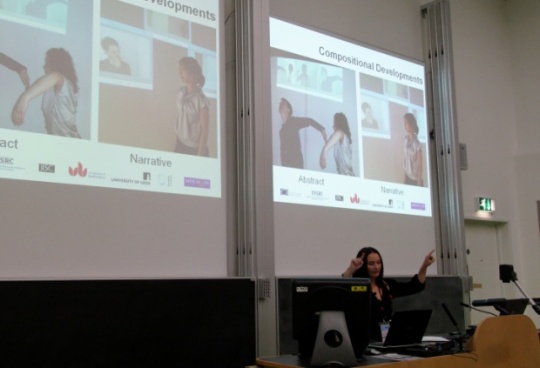
Comments : 2 Comments »
Categories : Dissemination, Publication
24
08
2008
 Â
Â
Sita and I went to Singapore at the end of July to present the project paper titled “e-Dance: Relocating choreographic practice as a new modality for performance and documentation”. The conference took place at venues throughout Singapore including the Singapore Management University, National University of Technology, Nang Yang University and Lasalle College of the Arts.
 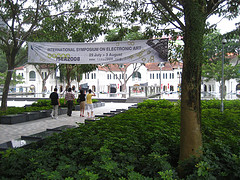 Â
 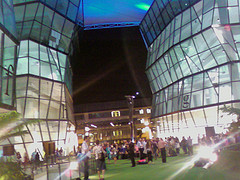
We both had a really interesting time. There were some great presentations. The key-notes by Ken Mogi on Creativity and the Brain and Lev Manovich on Visualising Culture were both particularly relevant to the project. Ken Mogi constructed a view of creativity from the perspective of Evolutionary Psychology. He drew parallels between memory and creativity in terms of brain function. He talked about the ‘feeling of knowing’ as referred to by Psychologists and Neuroscientists. This seems particularly relevant in relation to Simon’s previous post.Â
There was a juried exhibition as part of the symposium and various shows that included a range of installation art work, the majority of which focused on interactivity.Â
 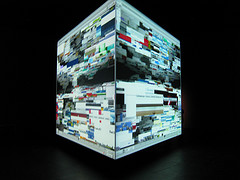 Â
 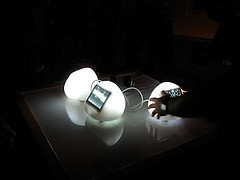
The most compelling performance experience was “True” a Japanese dance-theatre work created collaboratively by an interdisciplinary team of artists and technologists (some of which were members of Dumb Type). The integration of technology into the live work was so subtlely managed, it was a visual, visceral, auditory treat.
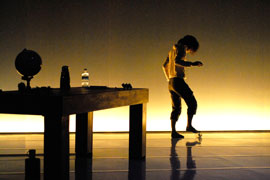
Comments : No Comments »
Categories : Dissemination, Publication
24
08
2008
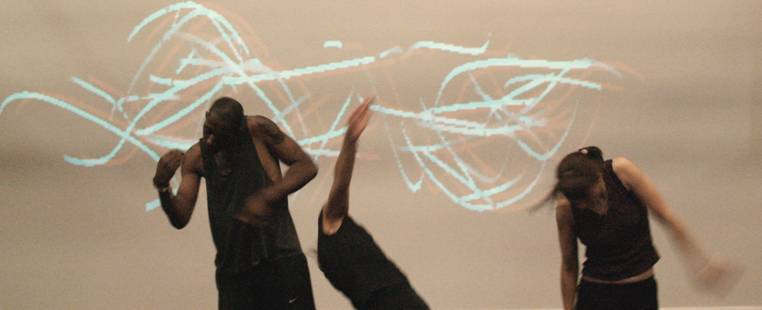 Â
Â
Martin and I, together with Dance Artist James Hewison, who has contributed to several of the research intensives, presented a paper at EVA in London in July. The presentation titled “Choreographic Morphologies”, outlines the key findings from the Morphologies practice-led research. The conference proceedings have been published by British Society of Computing.
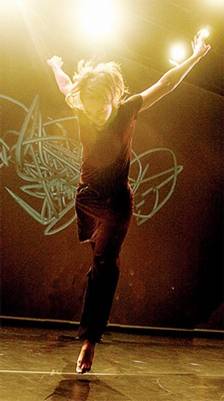
Comments : No Comments »
Categories : Dissemination, Publication
16
05
2008
I’m going to be doing an on-line interview with Torsten Reimer on the www.arts-humanities.net website. It will start some time towards the end of May.
Comments : No Comments »
Categories : Dissemination, Media


















